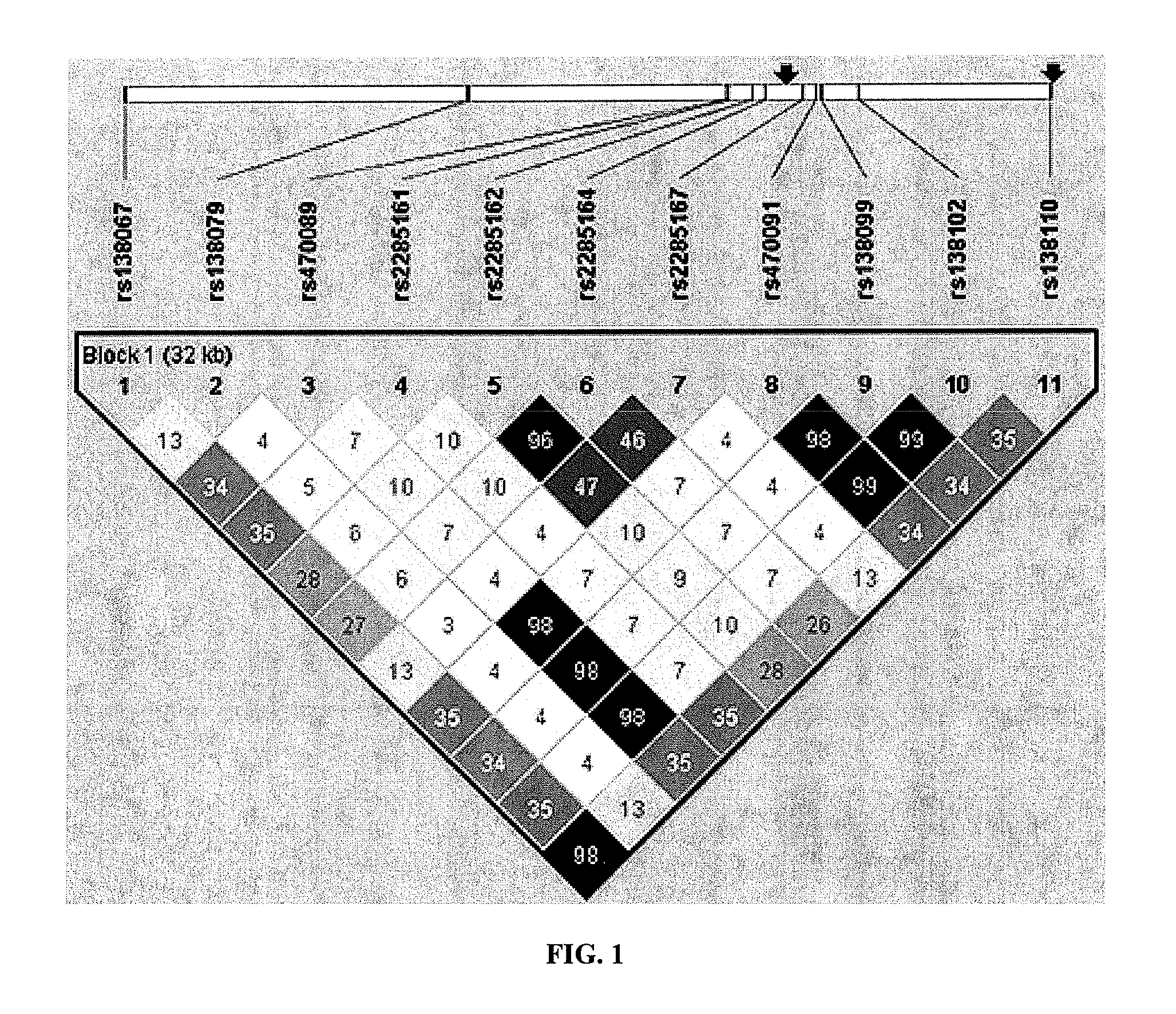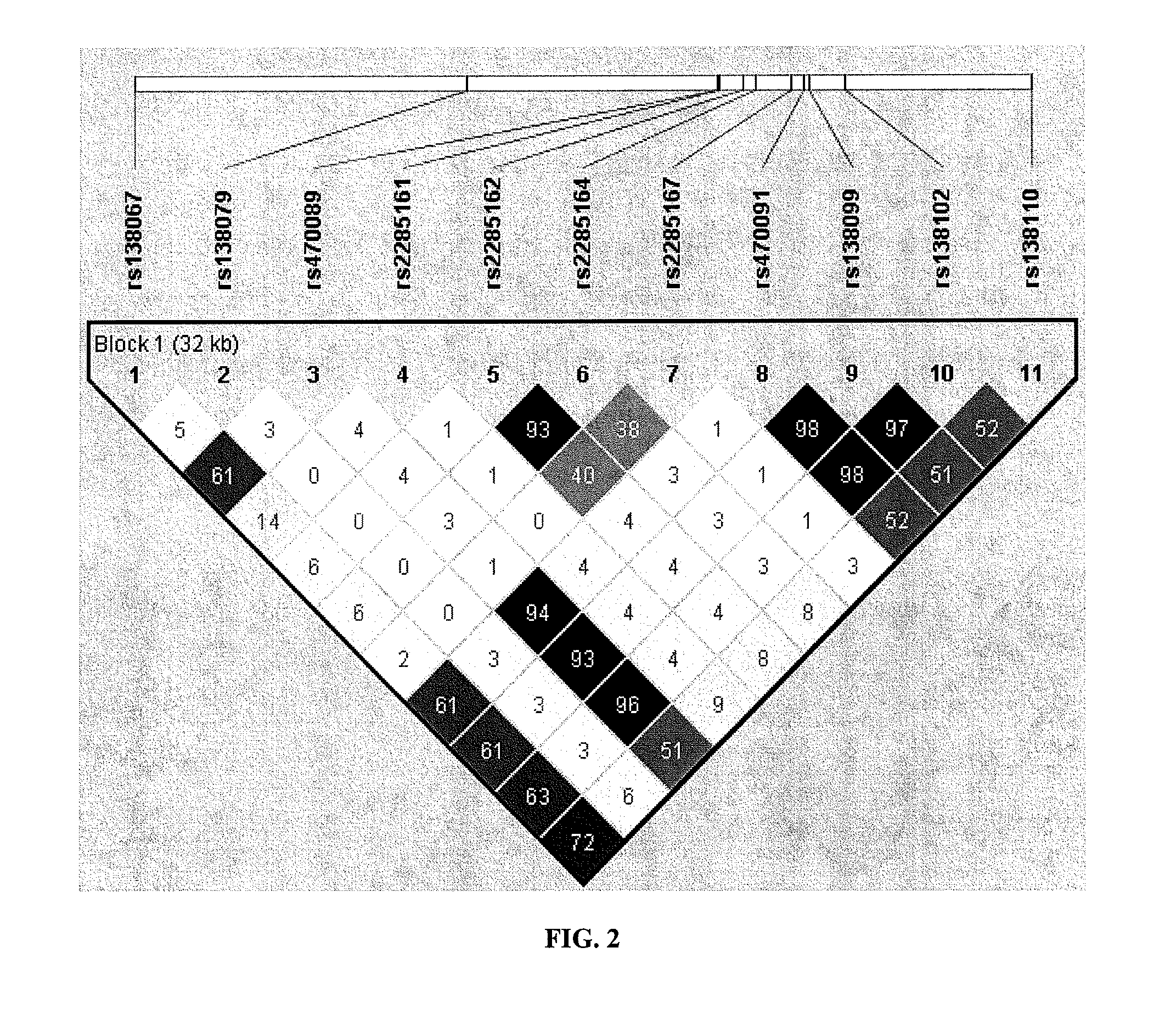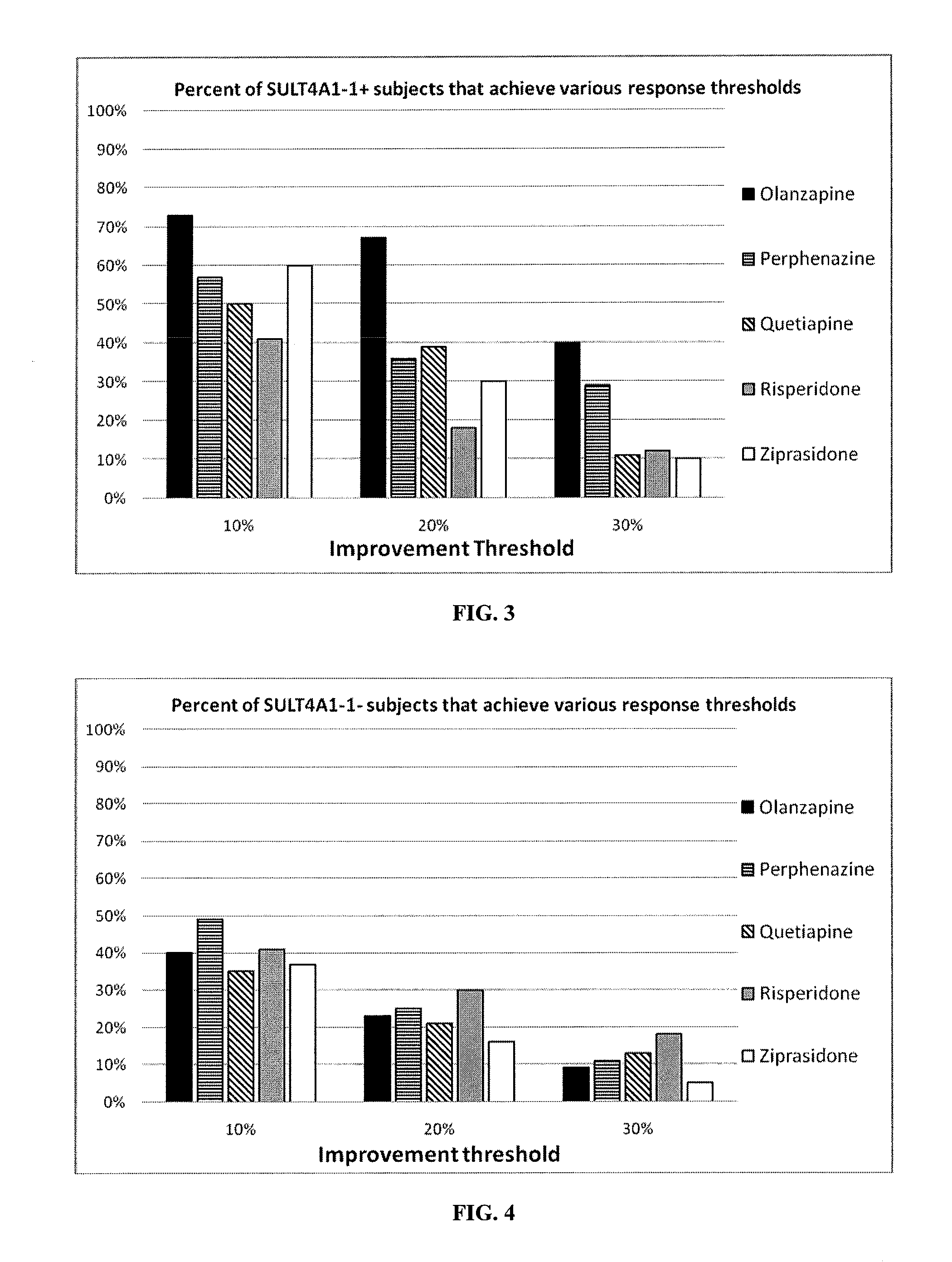Methods and compositions for the treatment of psychotic disorders through the identification of the SULT4A1-1 haplotype
a technology of haplotype and psychotic disorder, applied in the field of genetic markers of antipsychotic response, can solve the problems of inability to identify inability to detect which antipsychotics are effective, and difficulty in detecting the presence of sult4a1-1, so as to achieve optimal antipsychotic treatment
- Summary
- Abstract
- Description
- Claims
- Application Information
AI Technical Summary
Benefits of technology
Problems solved by technology
Method used
Image
Examples
example 1
Characterization of the Haplotype Structure of the SULT4A1 Gene
[0348]The CATIE study, a large federally funded clinical trial designed to assess the efficacy of antipsychotics in a real world setting, is a valuable resource for determining the role of genes in baseline psychopathology and drug response (Lieberman et al., 2005; Stroup et al., 2003). As part of the CATIE trial, detailed clinical evaluations were conducted, including Positive and Negative Syndrome Scale (PANSS) measurements at multiple time points, cognitive evaluation, vital signs, blood chemistry results, and drug response data. Additionally, whole genome SNP genotyping was performed for roughly half of the trial participants (Sullivan et al., 2008).
[0349]The inventors used samples collected in the course of the CATIE trial to study SULT4A1 haplotypes to determine if one or more specific haplotypes might contribute to the clinical differences in SSD patients. The inventors contemplated that one or more commonly occur...
example 2
The SULT4A1-1 Haplotype Correlates with Psychopathology in Caucasians
[0368]Linear regression analysis using PLINK indicated that the SULT4A1-1 haplotype showed a significant association with baseline PANSS scores for Caucasian schizophrenia patients in the CATIE study (Table 3; P=0.03). This haplotypes explains approximately 1% of the variance with a beta weight of 4.0, corresponding to an increase in total PANSS score of 4.0 associated with the haplotype.
[0369]
TABLE 3Correlation of SULT4A1 Haplotypes with PANSS Total Score in CATIEHaplotype (designation)aFrequencyBetabP valuecACGCAA[G]GCTCA (SULT4A1-1)0.1164.000.034(SEQ ID NO: 26)ACGCCG[A]GCTCA (SULT4A1-2)0.1250.460.723(SEQ ID NO: 27)ACGCAA[G]ACTCA (SULT4A1-3)0.145−0.050.753(SEQ ID NO: 28)ATGCCG[A]GCTCA (SULT4A1-4)0.158−2.040.287(SEQ ID NO: 29)GCACCG[G]GTCTG (SULT4A1-5)0.222−1.670.344(SEQ ID NO: 30)GCGTCG[G]GCTCG (SULT4A1-6)0.2370.170.784(SEQ ID NO: 31)
[0370]This relationship did not hold for the African American patients in the CA...
example 3
Assigning SULT4A1-1 Haplotype Status
[0374]Finished genotypes provided by the NIMH Center for Collaborative Genetic Studies on Mental Disorders were used to establish SULT4A1-1 haplotype status using a simple and intuitive scoring method for the presence of this established haplotype. As described in the previous Examples, the rs2285162(A) [or rs2285166(T)]-rs2285167(G) combination is both necessary and sufficient to identify SULT4A1-1 haplotype in Caucasians.
[0375]E. Genotyping methodology
[0376]The inventors seek only to document the well established quality of the genotyping methodologies used for the Examples, and do not mean to limit the invention to the particular molecular platform. For example, the Affymetrix platform, a widely used commercially available platform, was used in the CATIE study. The technology behind this platform has been included in CLIA-approved genotyping tests at the manufactures' own facilities and at third party providers.
[0377]The data process by the inv...
PUM
| Property | Measurement | Unit |
|---|---|---|
| time | aaaaa | aaaaa |
| time | aaaaa | aaaaa |
| threshold | aaaaa | aaaaa |
Abstract
Description
Claims
Application Information
 Login to View More
Login to View More - R&D
- Intellectual Property
- Life Sciences
- Materials
- Tech Scout
- Unparalleled Data Quality
- Higher Quality Content
- 60% Fewer Hallucinations
Browse by: Latest US Patents, China's latest patents, Technical Efficacy Thesaurus, Application Domain, Technology Topic, Popular Technical Reports.
© 2025 PatSnap. All rights reserved.Legal|Privacy policy|Modern Slavery Act Transparency Statement|Sitemap|About US| Contact US: help@patsnap.com



